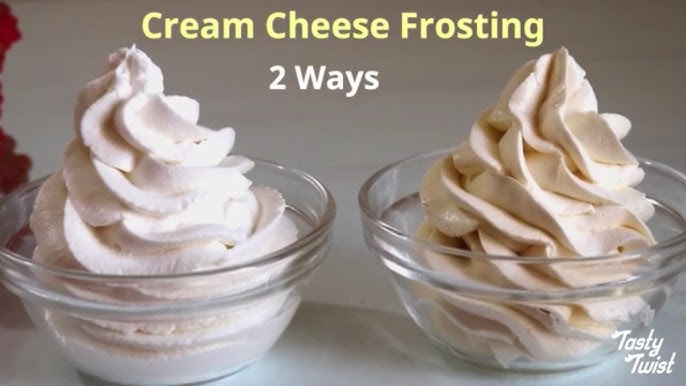Easy Icing Recipe: Icing is a sweet glaze or coating that’s typically spread over baked goods to add sweetness, moisture, and visual appeal. It can be smooth and glossy or thick and fluffy, depending on the type. The most basic icing is made from powdered sugar and a liquid (like milk or water), but there are many variations that bring different textures and flavors to the table.
Why Make Your Own Icing at Home?
Making your own icing is not only cheaper, but it’s also a game-changer when it comes to taste and customization. Store-bought versions are often loaded with preservatives and can be overly sweet or artificial-tasting. When you make it yourself, you control the sweetness, thickness, and flavor. Plus, it’s fun, therapeutic, and gives your bakes that personal homemade touch.
Ingredients Needed
Basic Ingredients for Icing
Here’s the cool part: you only need a few pantry staples to whip up a delicious icing.
- Powdered Sugar (also known as icing sugar or confectioners’ sugar): The base of most icing recipes. It dissolves easily and gives icing its smooth texture.
- Butter or Margarine: Used in buttercream icing to add richness and structure.
- Milk or Water: Adjusts the consistency of the icing. A little goes a long way.
- Vanilla Extract (optional): For added flavor.
That’s it! Simple, right?
Optional Add-ins for Flavor and Color
Want to spice things up? You can customize your icing with a variety of add-ins:
- Food coloring (gel or liquid) to match your party theme
- Cocoa powder for chocolate icing
- Almond, lemon, or peppermint extract for a twist
- Cream cheese for a tangy flavor
- Coconut milk for a tropical flair
Play around and find your favorite combo!
Tools You’ll Need
Must-Have Kitchen Tools
You don’t need fancy equipment to make great icing, but having the right tools can make the job quicker and cleaner:
- Mixing bowl – Preferably deep to avoid powdered sugar explosions!
- Electric mixer or whisk – An electric mixer makes life easier, but a hand whisk works too.
- Measuring cups and spoons – For accuracy.
- Sifter or sieve – To remove lumps from your sugar.
Nice-to-Have Extras
These aren’t essential but are super helpful, especially if you’re decorating:
- Piping bags and tips – For fancy decorating.
- Spatula or offset spatula – To spread icing smoothly.
- Food thermometer – For precision in more advanced recipes.
Types of Icing You Can Make
Buttercream Icing
The classic. Rich, creamy, and easy to spread, buttercream is perfect for cakes and cupcakes. It’s made by beating butter and powdered sugar until light and fluffy. Add milk or cream for smoothness and vanilla for flavor. It also holds up well for piping and decorating.
Glace Icing
Also known as water icing, this one’s the simplest. Just powdered sugar and a few drops of water or lemon juice. It’s ideal for cookies or drizzling over cakes. It dries to a glossy, slightly hard finish—perfect if you want a sleek look without the fluff.
Cream Cheese Icing
Tangy, sweet, and incredibly smooth. Made with cream cheese, butter, powdered sugar, and vanilla, this icing pairs beautifully with red velvet, carrot cake, and cinnamon rolls. It’s a bit softer than buttercream but oh-so-delicious.
Step-by-Step Guide to Making Basic Icing
Step 1: Gather Your Ingredients
Before you start, make sure you’ve got everything out and ready. This helps avoid mid-recipe panics when you realize you’re out of milk!
You’ll need:
- 2 cups powdered sugar
- 2–3 tablespoons milk or water
- 1 teaspoon vanilla extract (optional)
- Food coloring (optional)
Step 2: Measure and Sift Your Sugar
Sifting the sugar is key—it removes lumps and makes your icing silky smooth. Don’t skip this step if you want that professional finish.
Step 3: Blend the Butter or Liquid
If you’re making buttercream, beat your softened butter first until it’s fluffy. Then gradually add your sifted sugar. If you’re going the simple route with glace icing, start mixing your sugar with a tablespoon of milk or water.
Step 4: Mix Until Smooth
Use a hand mixer or whisk to beat the icing until there are no lumps and the texture is consistent. If it’s too thick, add a tiny bit more milk. If it’s too runny, add more sugar. Keep mixing until it’s spreadable but firm.
Step 5: Adjust Consistency
This is where you fine-tune. Want a drizzle? Go thinner. Want to pipe roses on a cake? Thicker is better. You’re the boss here.
How to Add Flavors and Colors
Natural vs. Artificial Additions
Adding color and flavor to your icing is where the real fun begins. You’ve got two paths to choose from—natural or artificial.
Natural options come from ingredients you might already have at home:
- Beet juice for pink
- Matcha powder for green
- Turmeric for yellow
- Cocoa powder for chocolate flavor and color
- Fruit purees like raspberry or mango for vibrant color and zesty flavor
These natural choices not only add beauty but also infuse your icing with exciting, earthy tastes.
Artificial options, on the other hand, offer brighter, more predictable results. Gel food coloring is a top choice because it’s super concentrated and doesn’t water down your icing like liquid dyes can. For flavor, a few drops of extracts—vanilla, lemon, peppermint, or almond—can transform your icing with just a stir.
Popular Flavoring Ideas
Here are some great icing flavors you can try:
- Vanilla Bean – Use real vanilla seeds or high-quality extract
- Chocolate – Add cocoa powder or melted chocolate
- Strawberry – Use freeze-dried strawberry powder or puree
- Coconut – Add coconut milk and shredded coconut
- Espresso – Dissolve instant espresso in milk before mixing
Want a holiday spin? Add peppermint extract and a dash of red coloring for a Christmas-themed frosting!
Tips for Perfect Icing Every Time
Common Mistakes and How to Avoid Them
Even the simplest icing recipes can go sideways if you’re not careful. Let’s break down some frequent errors and how to fix them:
- Too Runny? You probably added too much liquid. Add more powdered sugar a tablespoon at a time.
- Too Thick? Add a few drops of milk or water and mix until you reach the right texture.
- Grainy Texture? Your sugar wasn’t sifted, or it didn’t dissolve completely. Always sift and mix thoroughly.
- Icing Separating? This can happen if you overbeat or your ingredients aren’t at the same temperature. Use room temp ingredients and stop mixing once it’s smooth.
Storing Your Icing
Made too much icing? No worries—it stores well!
- In the fridge: Store in an airtight container for up to a week. Let it come to room temperature and re-whip before using.
- In the freezer: Yes, you can freeze icing! Store it in a freezer-safe container and thaw it in the fridge overnight before use.
Just remember to label it with the date. Fresh is always best, but backup icing is a total lifesaver in a pinch.
Decorating With Icing
Best Cakes and Bakes for Icing
Not all baked goods are created equal when it comes to icing. Here are some that are perfect partners:
- Classic vanilla or chocolate cakes
- Cupcakes – especially for birthdays and celebrations
- Sugar cookies – great with glace icing
- Brownies and bars – a thin layer of icing can take them to the next level
- Cinnamon rolls – cream cheese icing is a must
The type of icing you choose depends on what you’re baking. Buttercream is best for structure and fancy designs, while glace icing gives a sleek, shiny finish.
Easy Decorating Techniques
You don’t need to be a cake boss to make your desserts look amazing. Try these simple tricks:
- Swirls with a spatula – Give cupcakes a bakery-style look with just a spoon or spatula.
- Drip effect – Use slightly runnier icing and pour over cakes for a modern “drip” finish.
- Piping bags – Create borders, rosettes, or even write names with ease.
- Sprinkles, edible glitter, or fruit – These little extras add pop and personality.
Even if it’s not perfect, remember: the love you put into your homemade icing shows. And honestly, who doesn’t love licking the spoon?
FAQs about Easy Icing Recipe
1. What ingredients do I need for a basic icing recipe?
You’ll typically need powdered sugar, milk (or water), and vanilla extract. Optional additions include butter, cream cheese, or food coloring for flavor and decoration.
2. How do I make icing thicker or thinner?
To thicken icing, add more powdered sugar. To thin it out, slowly mix in more milk or water—just a teaspoon at a time.
3. Can I make icing ahead of time?
Yes! Store it in an airtight container in the fridge for up to 3 days. Stir before using to bring back the smooth consistency.
4. Is icing the same as frosting?
Not exactly. Icing is thinner and glossier, perfect for drizzling. Frosting is thicker and fluffier, used for spreading or piping.
5. How do I color icing?
Add a few drops of gel or liquid food coloring and mix well. Start small—you can always add more.
6. Can I freeze leftover icing?
Yes, you can freeze icing for up to 2 months. Thaw in the fridge and stir well before using.
7. What desserts can I use this icing on?
It’s great on cookies, cupcakes, cinnamon rolls, donuts, and cakes—any dessert that needs a sweet finish!
Conclusion
And there you have it—your complete guide to whipping up the easiest, tastiest icing from scratch. Whether you’re dressing up a birthday cake or adding a quick glaze to cookies, icing is the sweet little detail that can turn a good bake into a showstopper. With just a few ingredients and a little practice, you’ll be creating beautiful, flavorful icing like a pro.
So roll up those sleeves, grab your whisk, and let’s get icing!



